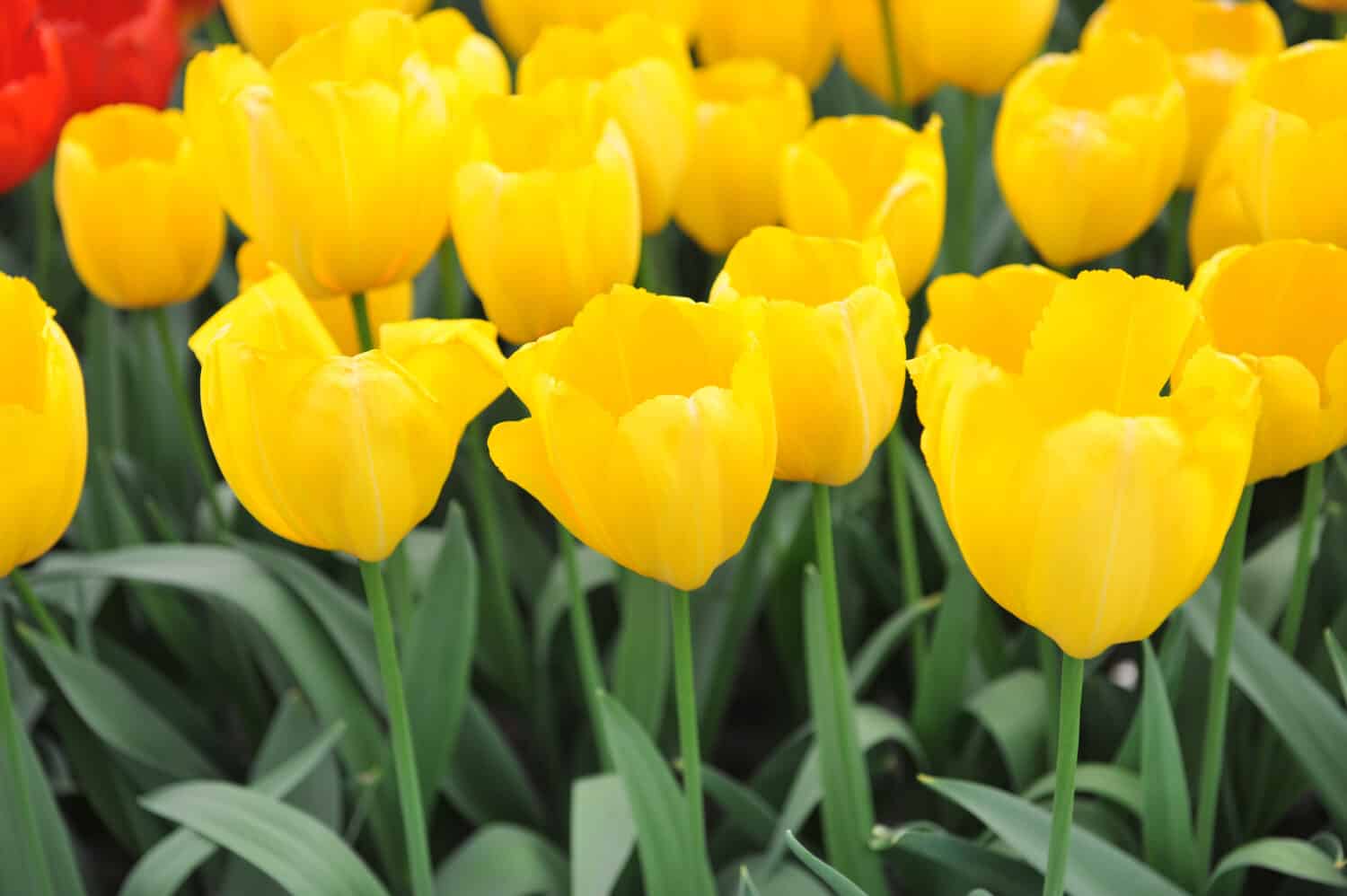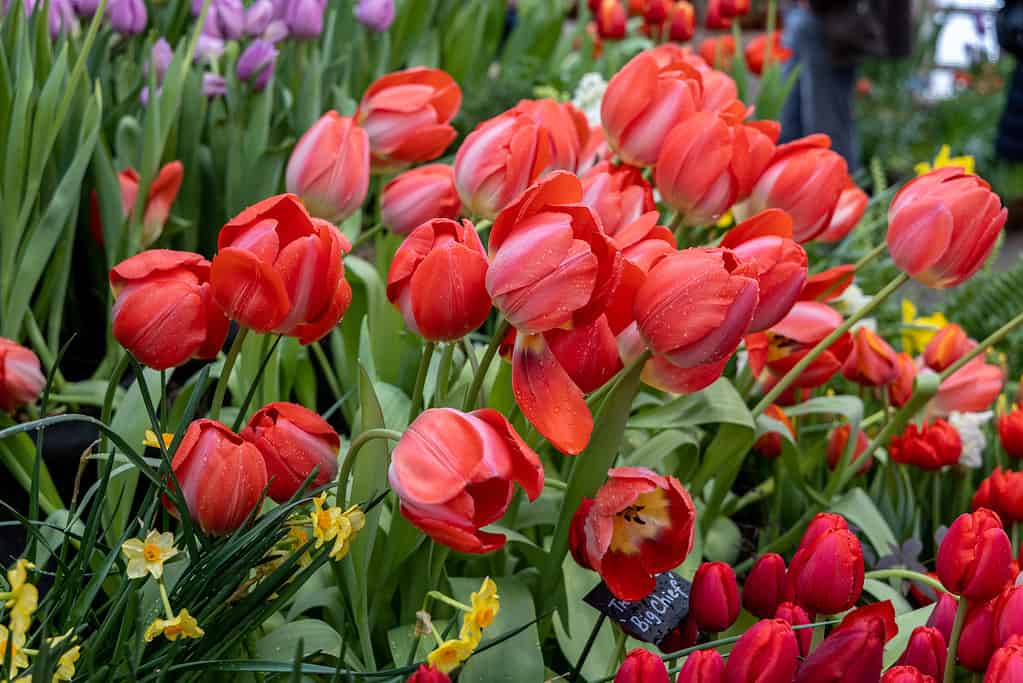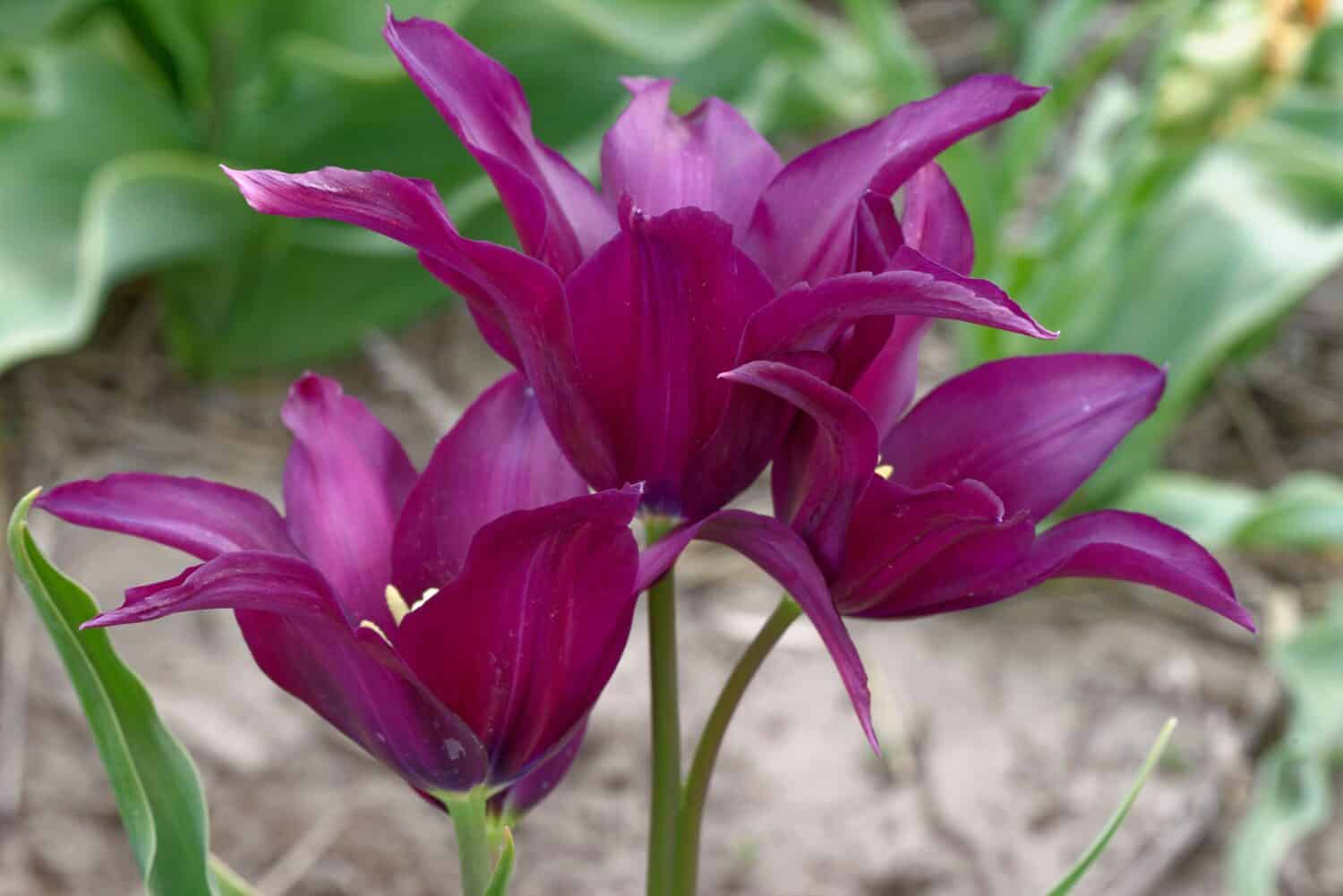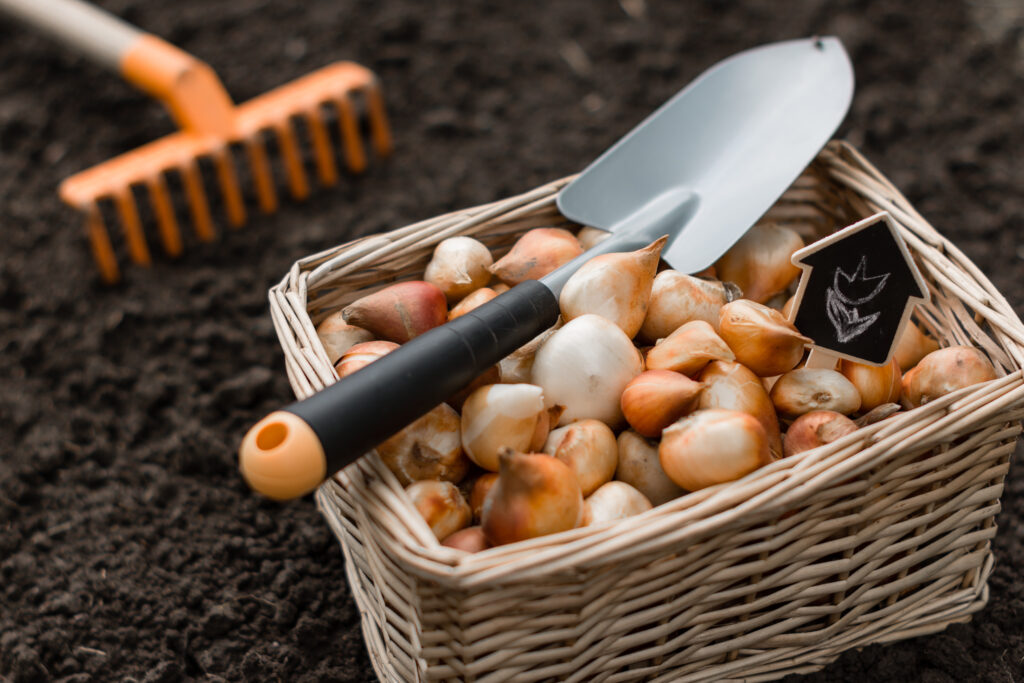For a chance to see some springtime wonders of “The Small Wonder” State, you can check out the tulip blooms at the Lewes Tulip Celebration. This annual spring festival honors the Dutch heritage of the region with over 100 tulip varieties on display. The Dutch have a rich history of cultivating tulips, especially in the maritime areas of The Netherlands. Gardeners in Delaware hoping to grow tulips are in luck in this maritime state. Read on to discover 4 tulips that grow best in Delaware, how to plant and care for them and more!
Types of Tulips
Choosing which tulips to grow in Delaware requires some knowledge of tulip varieties. With over 3,000 varieties of tulips to choose from, you’ll have to narrow your choices down somehow. Tulips are divided into 15 groups based primarily on their flower type, blooming period, and heritage.
Each of the groups typically blooms either early, mid or late-spring. The majority of the tulip groups are hybridized cultivars which have been bred over time to display unique characteristics and ostentatious blooms. There is one group, called Botanicals or Species tulips, which has not been hybridized and instead includes wild tulip species. We have chosen to focus on hybrid Dutch classics for Delaware planting.
Tulips That Grow Well in Delaware
The majority of Delaware is part of the Atlantic coastal plain and has a humid subtropical climate. Nearly the entirety of the state falls within USDA Plant Hardiness Zone 7. All tulips perform well in Zones 3-7, as cold-hardy bulbs and should perform well in any region of the state. However, tulip growth is extremely temperature dependent, which we will discuss in detail below. It’s not uncommon for Delaware residents to experience warm winter temperatures that rise to signal an early spring, only to plummet again with periods of extreme cold. Therefore it may be best to avoid early blooming tulips and focus on mid-late season varieties.
So, which varieties should you choose for your spring display?
The tulips that grow best in Delaware are varieties that bloom in mid to late spring. They will fare best in Delaware’s climate with the potential for late frosts. Feel free to experiment with early-spring blooming tulips, just be prepared to protect the early emerging plants from extreme temperatures.
1. Tulipa ‘Golden Prins Claus’

‘Golden Prins Claus’ typically grows to 22 inches in height, producing vibrant yellow flowers.
©Sergey V Kalyakin/Shutterstock.com
With a classic cup or goblet shape and a lemon-yellow bloom, Tulipa ‘Golden Prins Claus’ is an exceptionally bright herald of spring. This variety grows to an average height of 22 inches with plump, shapely flowers. ‘Golden Prins Claus’ falls within the Triumph tulip group, which was developed by crossing members of an early and a late blooming group to create a sturdy and versatile mid-season tulip.
2. Tulipa ‘Big Chief’

‘Big Chief’ flowers shift in intensity with changes in sunlight and during the process of blooming.
©iStock.com/Olga Seifutdinova
Tulipa ‘Big Chief’ is a color-shifting variety that shines with enormous blooms in hues of iridescent salmon-rose. The petals have a soft yellow base and an exterior silvery sheen. The color can seem to shift in intensity with changes in sunlight and during the process of blooming. This is a particularly large variety of Darwin hybrid tulip that grows to an average height of 24 inches and typically blooms from mid-April to May. These are strong and sturdy tulips that are known to perennialize easily if not cut for bouquets.
3. Tulipa ‘Green Spirit’

‘Green Spirit’ blooms late in the season producing creamy white petals streaked with lime green.
©Sergey V Kalyakin/Shutterstock.com
A striking member of the Viridiflora group, Tulipa ‘Green Spirit’ features creamy white petals streaked with lime green. This unique color arrangement gives the sense that the stems and foliage of the plant are blending into the petals. Viridi is Latin for fresh and green, giving this group a fitting name as green-tinged spring flowers. ‘Green Spirit’ is a variety that blooms late in the season, typically in May. They are excellent for cutting as their blooms are long-lasting in a bouquet.
4. Tulipa ‘Burgundy’

‘Burgundy’ is a delicate variety with thin stems and slim, fluted petals.
©Walter Erhardt/Shutterstock.com
Tulipa ‘Burgundy’ is a variety of Lily-flowered tulip with fluted, pointed and flexed petals of burgundy. Lily-flowered tulips are somewhat delicate beauties with thin stems. ‘Burgundy’ grows to an average of 20 inches tall and does best in a wind-protected area. This tulip blooms in late spring and naturalizes well, meaning it can be grown as a perennial and be expected to come back year after year with proper care.
Are Tulips Annuals or Perennials?
Tulips are a perennial plant, but the average lifespan of most tulip bulbs is 2-5 years. Most tulips have been hybridized over time and pushed to display unique displays of stunning colors and shapes. These modern-day tulips have impressive blooms but their performance can become diminished over time.
Many gardeners treat tulips as annuals, growing several varieties over a season and then replacing them with an entirely different display the next year. Others prefer to let them come back as perennials. The way you grow tulips in your Delaware garden will come down to individual preference.
A Tulips Life Cycle is Temperature Dependent
Tulips will grow best in Delaware when you consider their annual growth cycle. They follow a pattern of warm-cool-warm temperatures:
During fall, bulbs are planted in cool soil that allows the plants to develop healthy roots. A period of lengthy exposure to cold temperatures between 35-45 degrees Fahrenheit follows. Tulip bulbs don’t merely survive these winter temperatures, but need them to flourish. Winters in Delaware are cold enough to provide this environment and signal proper flower formation. As spring approaches, the bulbs prepare to emerge as soil temperatures rise above 50 degrees and the flower begins to mature within the bulb. Temperatures above 60 degrees cause shoots to erupt through the soil and eventually mature to their full-bodied blooming forms.
Spring temperatures can sometimes initiate the blooming process and then plummet again. This is especially true if you choose to plant an early-blooming variety. Make sure to cover your tulip plantings if you know that a freeze is expected for your area around blooming time. Tulip foliage and still-closed buds can withstand a light freeze but long periods of below-freezing temperatures can damage them.

Tulip foliage and still-closed buds can withstand a light freeze should the temperatures drop temporarily.
©iStock.com/johny007pan
When to Plant Tulips in Delaware
As the summer comes to a close it’s time to think about fall planting for your tulips. Choose which varieties you’d like to grow by browsing bulb catalogs or visiting a local gardening center to find out what they have in stock.
The best time to plant tulips is when soil temperatures in your area are within the range of 40 to 50 degrees. Make an effort to get your bulbs buried about 6-8 weeks before the predicted first freeze for your area. For most regions of Delaware the ideal time will fall sometime between October and November.
Choose a Proper Planting Location
Tulips thrive in areas that receive full sunlight. Areas that are near buildings or other structures can serve as heat reservoirs and also provide some wind and rain protection. If you choose to plant in containers, be aware that the plants may need additional protection from freezing temperatures.
Soil in your chosen planting location should be rich in organic matter. You can add compost or another fertilizer at planting time and in the spring. Tulips appreciate well-draining soil that will resist problems like rot. Some regions in Delaware will have excessively draining sandy soil while others will be heavier in clay. Investigate what you have in your region and add amendments as necessary.
How to Plant and Care for Tulips in Delaware
After choosing a planting location, dig a hole for each tulip bulb. As a general rule, the holes should be 2-3 times as deep as the height of the bulb. In very heavy, clay-type soils plant them 1-2 inches closer to the surface to give them the best chance to emerge successfully.
Tulips tend to look better planted in clusters rather than straight rows. Give 3-8 inches of spacing between the holes. Place each bulb in a hole with its pointed end up and then cover with soil.
Add a 2-3 inch layer of bark or straw mulch on top of the soil. Mulch helps to protect the bulbs from temperature extremes and helps the soil to retain the right amount of moisture. Cold-hardy bulbs like tulips tend to be pretty hands off after planting. Simply give them a good watering once they’re in the soil and you can usually leave them alone until spring. If you experience a major drought in your area another watering may be beneficial.

Cold-hardy bulbs like tulips tend to be pretty hands off after planting.
©Jurga Jot/Shutterstock.com
When Do Tulips Bloom in Delaware?
Tulips will bloom sometime during the spring. Exactly when this happens will depend on the tulip types you’ve planted. Triumphs and Darwin hybrids bloom mid-spring, while Viridifloras and Lily-flowered varieties bloom late-spring. Single-early and double-early tulips, as their names suggest, come up early in the season. If you’d like to plant early tulips in Delaware, consider planting them in a warmer, sheltered location such as near a building. This planting location can act as a heat reservoir and offer some protection in unexpected cold snaps.
Putting Tulip Beds to Rest
Once your beautiful blooms are spent for the season, you have two options for putting your tulip bed to rest.
As Annuals
If growing tulips as annuals, dig the bulbs up after they’ve bloomed for the season and compost them.
As Perennials
If you’d like your tulips to come back as perennials the following year and beyond start by clipping off the flower heads. This prevents the plant spending unnecessary energy going to seed. Let the leaves continue to grow and photosynthesize as the plant works to store energy for the next season. After the foliage has gone limp and yellow you can remove it. If your tulip beds become overcrowded you’ll want to dig up the bulbs, divide them and store the best ones in a cool, dry spot for planting the following spring.

If your tulip beds become overcrowded, you can dig up the bulbs for winter storage.
©iStock.com/Maryviolet
Annual Tulip Festival in Delaware
The Lewes Tulip Celebration is an annual festival honoring the Dutch heritage of Lewes, Delaware. During the event, the town erupts in color with over 30,000 tulips planted around the city. Over 100 tulip varieties are represented. A “Tiptoe to the Tulips” Map is available both online and in person at the Lewes Chamber of Commerce Visitor Center. Art exhibitions, historical walking tours and plant sales are just a few of the other offerings to check out during this tulip-filled spring celebration.
The photo featured at the top of this post is © Sergey V Kalyakin/Shutterstock.com
Thank you for reading! Have some feedback for us? Contact the AZ Animals editorial team.







